
views
Applying CC Cream

Cleanse, tone, and moisturize your skin. Flawless application starts with clean skin, so wash your face with lukewarm water and a mild cleanser, then gently pat dry with a clean towel. If you have oily skin, apply toner using a cotton pad, and follow up with an oil-free moisturizer. If you have dry skin, skip the toner and apply a hydrating moisturizer, being extra gentle around the eye area.
Apply a thin layer of primer for extra-long wear. Use your fingertips to blend a pea-sized amount all over your face, then wait one minute for the primer to dry before applying your CC cream. Primer can reduce the appearance of fine lines and hyperpigmentation, helping you achieve a flawless base. If you have oily skin, opt for a long-lasting or pore-minimizing primer. If you have dry skin, look for a hydrating or illuminating primer.

Put small dots of CC cream on your face. Squeeze 1-2 pumps of CC cream onto your fingers, then dot the product over your forehead, nose, chin, and both cheeks. For extra coverage, add an extra dot of product to specific areas, like the sides of your nose or over a blemish. Pro tip: Apply CC cream to the areas that need the most color correcting first. That way, you even out your skin tone and avoid using too much product.

Blend the cream with a makeup brush, beauty blender, or clean fingers. Start at the center of your face and work your way out, buffing the product into your skin (instead of rubbing it). Generally, applying CC cream with a flat top brush gives you the most coverage, while using your fingers gives you the most natural finish. A beauty blender or sponge is good for a flawless, airbrushed look. If you’re applying CC cream with your fingers, be sure to wash your hands first. If you’re using a makeup brush, clean it weekly with a brush cleanser. If your CC cream looks streaky, dampen a beauty blender or makeup sponge and wring out any excess water. Gently press it all over your face to blend out any harsh lines.
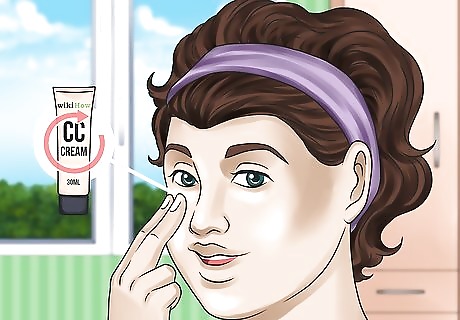
Add more CC cream to any problem areas, if desired. If you have pimples, dark circles, or other spots of discoloration, wait 1-2 minutes for the first layer of CC cream to dry before applying an extra dot of CC cream over any problem areas. Blend out the product with your fingers for a smooth and even complexion. Alternatively, use a concealer brush for a more targeted application. Allowing the base layer to dry completely helps minimize a cakey or uneven appearance. EXPERT TIP Daniel Vann Daniel Vann Licensed Aesthetician Daniel Vann is the Creative Director for Daredevil Cosmetics, a makeup studio in the Seattle Area. He has been working in the cosmetics industry for over 15 years and is currently a licensed aesthetician and makeup educator. Daniel Vann Daniel Vann Licensed Aesthetician CC Cream is best used on problem areas. Daniel Vann, a licensed aesthetician, says: "Color correcting creams are best for extreme cases when foundation and concealer don't work. Foundation is also a color corrector, so your foundation should be able to do what CC creams do. You should try not to apply too many products to your face, and many products already have a color correction in them."
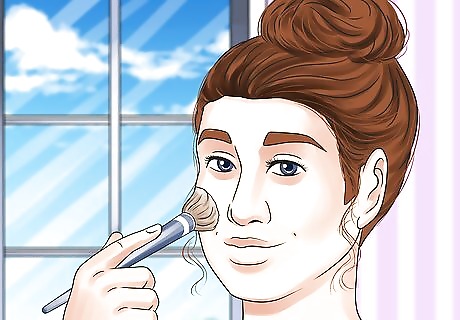
Buff your skin with a brush or beauty blender to remove any streaks. Use a large, fluffy brush or damp beauty blender to buff out the CC cream and ensure it’s evenly distributed. Start at the center of your face and blend outward, using small patting motions.

Apply setting powder and setting spray for a long-lasting finish. Use a large powder brush to apply setting powder over your entire face, focusing the product on any areas that tend to get oily. Then, seal your look in place with an even layer of setting spray all over.
Choosing the Right Color & Formula
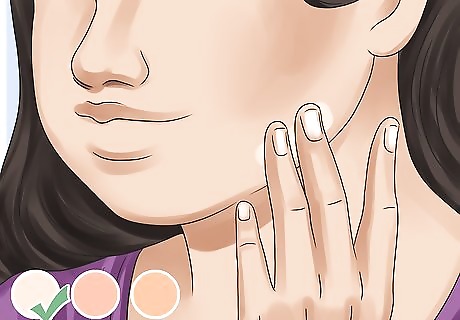
Ensure the color matches your skin tone as closely as possible. If possible, visit your local beauty store and get color matched in person. If that’s not possible, get samples of a few different CC creams and swatch them on your jawline to see which shade matches the best. Your perfect shade will blend seamlessly into your skin, without looking too warm or cool. If you have fair skin, pick a CC cream with a pink or peach undertone. If you have medium skin, opt for a CC cream with a yellow or olive undertone. If you have dark skin, choose a CC cream with a bronze or golden undertone.
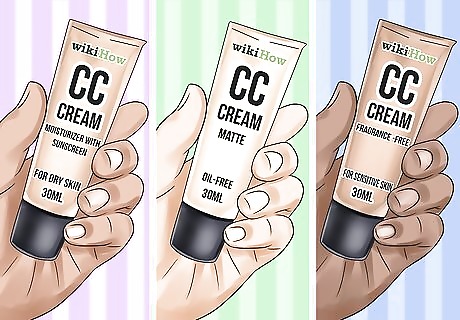
Pick a CC cream formulated for your skin type. Some CC creams are designed for specific skin types, so read the packaging to see what product suits you: If you have oily skin, select an oil-free CC cream that has a matte finish. If you have dry skin, pick a hydrating CC cream, like one containing hyaluronic acid. If you have sensitive skin, choose a CC cream that is fragrance-free and noncomedogenic.
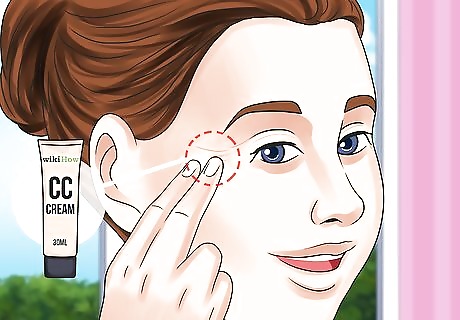
Choose a cream that targets your problem areas. Different CC creams tout various benefits, from sun protection and minimizing pores to clearing up acne and lightening age spots. Think about what you want to correct and pick a product designed to do so. For instance, you could choose a product with stem cell technology to reduce the look of fine lines and wrinkles. Or, opt for a cream packed with antioxidants to minimize breakouts.
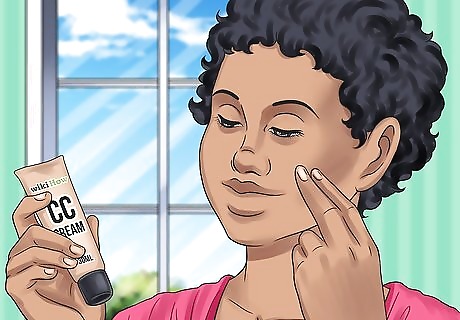
Determine the coverage you want. Some CC creams work like a tinted moisturizer, while others have heavier pigmentation like foundation. Choose a medium or full-coverage CC cream for a more opaque finish. If you prefer a more natural look, choose a lightweight CC cream with a thinner texture, or one with buildable coverage that can be layered. If you want a radiant finish, choose a dewy CC cream with hydrating ingredients. It’s the perfect choice for the “your skin but better” look. If you want a more full-coverage look, opt for a matte or semi-matte CC cream. This formula works best for people with oily or acne-prone skin because it helps control shine.

















Comments
0 comment